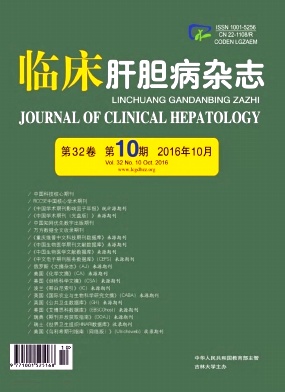Objective To investigate the spiral CT and ultrasound findings of hepatic adenoma and the value of spiral CT and ultrasound in the diagnosis of hepatic adenoma. Methods A retrospective analysis was performed for the spiral CT and ultrasound findings of 15 patients with pathologically confirmed hepatic adenoma in Langfang Hospital of Traditional Chinese Medicine from July 2009 to December 2015. Results All the 15 patients showed hypoechoic,isoechoic,or hyperechoic ultrasound findings. Seven of these patients had single hepatic adenoma. In the 7 cases,4 had low-density lesions,1 had a slightly low-density lesion,and 2 had equal-density lesions; as for the arterial phase,5 showed obvious enhancement,1 showed moderate enhancement,and 1 showed mild enhancement; as for the portal venous phase and delayed phase,3 showed reduced enhancement,2 had equal-density lesions,and 2 showed gradual enhancement. Eight patients experienced multiple hepatic adenoma with 80 lesions in total. In the 80 lesions,4 lesions( 3 patients) showed a mixed density,40 lesions( 4patients) showed a low density,36 lesions( 4 patients) showed a slightly low density; 8 lesions( 4 patients) showed obvious enhancement in the arterial phase and reduced enhancement in the portal venous phase and delayed phase; 3 lesions( 1 patient) showed obvious enhancement in the arterial phase and an equal density in the portal venous phase and delayed phase; 18 lesions( 2 patients) showed obvious enhancement in the arterial phase and portal venous phase and reduced enhancement in the delayed phase; 49 lesions( 5 patients) showed moderate enhancement in the arterial phase and reduced enhancement in the portal venous phase and delayed phase; 2 lesions( 1 patient)showed no enhancement in any phase. The correct rates of spiral CT in the diagnosis of single hepatic adenoma and multiple hepatic adenomas were 14. 3%( 1 /7) and 87. 5%( 7 /8),respectively. Conclusion Ultrasound can only suggest space-occupying lesions,but cannot analyze the lesions qualitatively; spiral CT with three-phase enhancement scanning has a great value in the diagnosis of hepatic adenoma,especially multiple hepatic adenoma.














 DownLoad:
DownLoad: